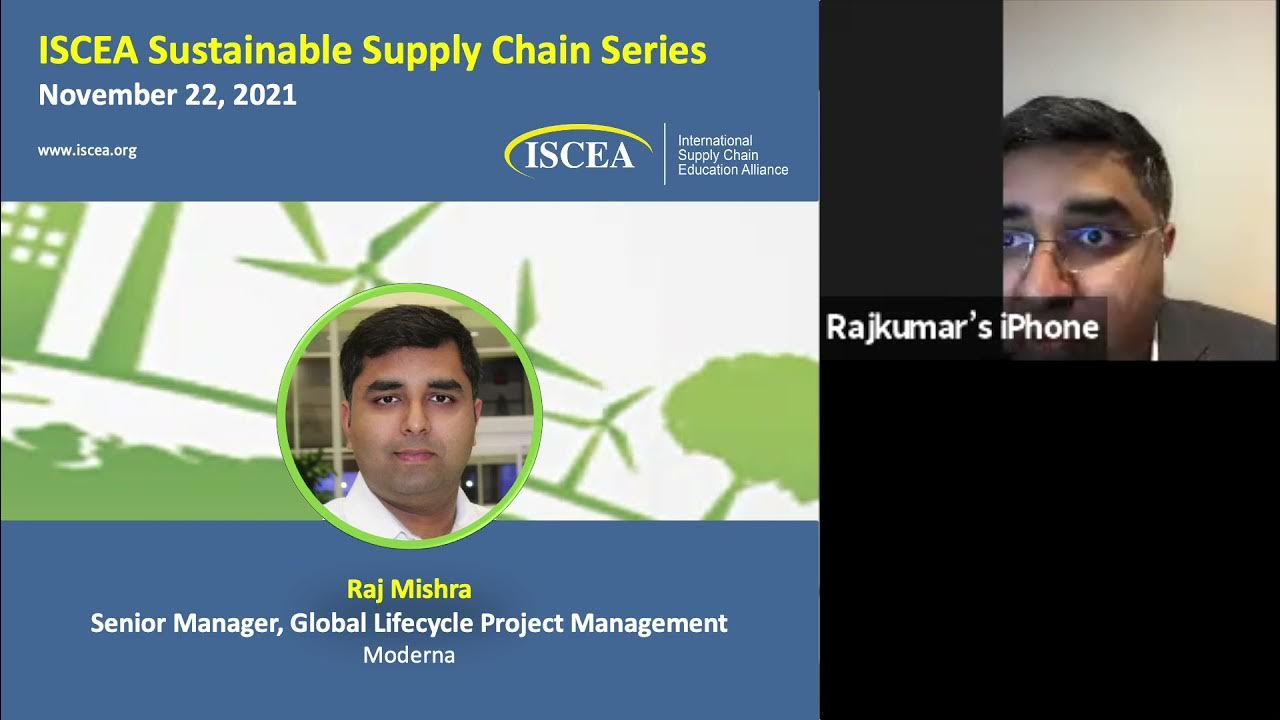Sustainable Procurement in Every Purchasing Decision - Kloopify
Summary
TLDR本访谈节目邀请了可持续供应链领域的杰出女性领导者Daniela Osio。作为Clopify的创始人兼CEO,Daniela分享了她的使命,即通过端到端的解决方案,帮助企业实现可持续采购,并与供应商合作达成环境、社会和治理(ESG)目标。她强调了从风险管理到创建抗脆弱供应链的重要性,并讨论了如何通过战略关系和项目推动可持续实践。Daniela还提到,领导层的支持和文化变革是实现可持续供应链的关键。
Takeaways
- 🌟 丹尼尔拉·奥西奥(Daniela Osio)是Clopify的创始人兼CEO,该公司提供端到端的可持续采购解决方案,帮助品牌从供应商选择到协作,实现和衡量可持续供应链管理。
- 🚀 丹尼尔拉之前是全球风险管理领导者,为价值40亿美元的电子和成像业务单元创建并实施风险管理组织,并在2019年被供应链管理研究所评为30岁以下供应链之星。
- 🌱 Clopify的使命是将可持续性整合到每一个采购决策中,使其成为核心业务决策的一部分,而不仅仅是次要考虑或痛点。
- 🔍 通过Clopify,公司可以在RFP(请求提案)过程中提出可持续性问题,筛选与自身ESG目标一致的供应商,并从一开始就将可持续性纳入考量。
- 📉 丹尼尔拉强调,尽管85%的组织宣布了雄心勃勃的可持续性目标,但只有2%真正实现了这些目标,Clopify旨在弥合这一差距。
- 🔗 可持续性与供应链风险管理密切相关,可持续的供应链能够更好地应对风险和中断,实现业务连续性。
- 💡 丹尼尔拉提倡将供应链转变为“反脆弱”的,即不仅能够抵御混乱,还能从混乱中受益并适应变化。
- 🛒 采购是推动循环经济和供应链可持续性的关键,通过支持提供循环材料或产品的组织,可以促进整个行业的可持续性发展。
- 💼 领导层的支持对于实现供应链可持续性至关重要,需要从顶层推动,并通过变革管理计划来实现文化转变。
- 📈 可持续性不仅是一个道德或环境问题,它还关系到公司的财务健康、人才吸引、创新能力和长期竞争力。
- 🌐 Clopify通过提供一个集中的平台,简化了与供应商的沟通和数据共享,帮助企业实现其可持续性目标,同时减少复杂性和提高效率。
Q & A
谁是Daniela Osio,她在可持续供应链领域扮演什么角色?
-Daniela Osio是Clopify的创始人兼首席执行官,她对解决世界上有意义的问题充满热情。Clopify是一个端到端的可持续采购解决方案,帮助品牌从供应商选择到协作,轻松整合可持续的采购方式。
Clopify的使命是什么?
-Clopify的使命是将可持续性整合到每一个采购决策中,使得可持续性不再是次要考虑因素,而是成为商业决策的核心。
Daniela在风险管理方面有哪些经验?
-Daniela曾是全球风险管理领导者,为价值40亿美元的电子和成像业务部门创建、开发并实施了风险管理组织。
为什么说采购是推动循环经济和供应链可持续性的关键?
-采购是推动循环经济和供应链可持续性的关键,因为通过采购决策可以支持那些提供循环材料或产品的组织,从而推动整个供应链向可持续性方向发展。
如何通过采购实践来减少供应链风险?
-通过与已经考虑过业务连续性计划、未来展望以及潜在风险的供应商合作,可以减少供应链风险。这样的合作伙伴关系有助于企业在面对中断时能够灵活应对。
为什么说供应链不仅仅是要具备弹性,还要能够从混乱中受益?
-供应链应该具备反脆弱性,这意味着它们能够从混乱和中断中学习并受益,而不仅仅是抵抗这些挑战。这样的供应链能够更好地适应变化,从而在长期内保持竞争力。
为什么说领导层的支持对于实现供应链可持续性至关重要?
-领导层的支持有助于减少实施过程中的障碍和阻力,确保整个组织朝着可持续性目标前进,同时也能够更好地响应股东和利益相关者的需求。
如何确保组织在实施可持续供应链解决方案时得到员工的接受和支持?
-通过有效的变革管理,包括沟通和解释为什么采取可持续性措施,帮助员工理解并接受新的工作方式。
Clopify如何帮助组织实现其可持续性目标?
-Clopify通过提供一个集中的平台,让买家和供应商能够共享可持续性数据,并围绕共同的ESG目标创建项目,从而简化流程并提高透明度。
为什么说可持续性不仅仅是成本问题,也是质量和发展问题?
-可持续性关乎企业的长期竞争力和市场地位。不采取可持续性措施的企业可能会面临成本上升、质量下降和创新能力减弱的风险。
为什么说现在是企业采取可持续性措施的最佳时机?
-由于消费者、股东和法规的压力,现在是企业采取可持续性措施的最佳时机。这不仅有助于企业避免潜在的罚款和声誉损失,还能吸引人才和投资,推动创新。
Outlines

This section is available to paid users only. Please upgrade to access this part.
Upgrade NowMindmap

This section is available to paid users only. Please upgrade to access this part.
Upgrade NowKeywords

This section is available to paid users only. Please upgrade to access this part.
Upgrade NowHighlights

This section is available to paid users only. Please upgrade to access this part.
Upgrade NowTranscripts

This section is available to paid users only. Please upgrade to access this part.
Upgrade NowBrowse More Related Video

Reimagining demand forecasting in the supply chain

Construyendo Cadenas de Suministros Resilientes

Sustainability in Pharmaceutical Industry - Moderna

Beyond the Box Episode 3: Visibility in supply chains

How Can Supply Chains Embrace Sustainability?

Circular Economy through Supply Chain Innovation - Sustainn
5.0 / 5 (0 votes)
